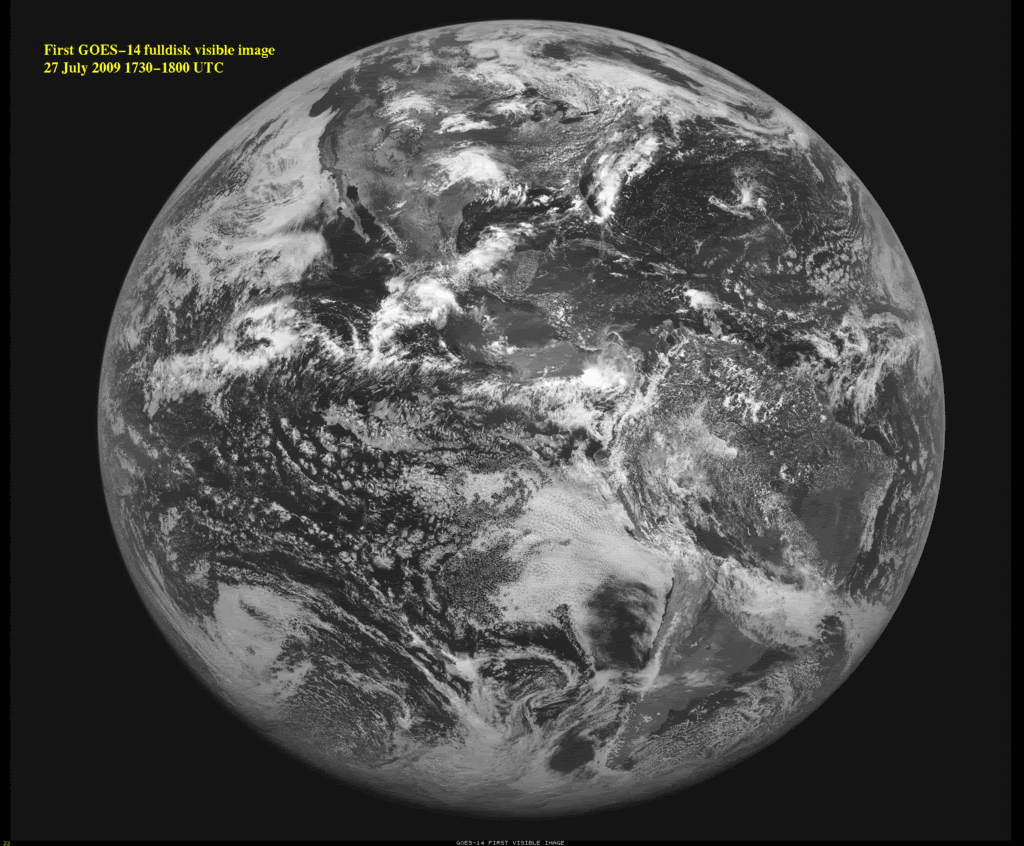On top of sending an orbiter to the moon and a shuttle to the ISS, NASA will be sending GOES-O to orbit this week. The GOES-O launch aboard a Delta IV rocket from Space Launch Complex 37 currently is scheduled for June 26. The launch window runs from 6:14 p.m. to 7:14 p.m. EDT. Recent production lot testing of the linear shape charge system has indicated the need to incorporate minor design changes to assure their reliability. The linear shape charge is a component of the Range Safety command destruct system. There are three linear shape charges on this Delta IV which will require a modification. Schedules are being developed for the qualification and implementation of the design modification.
Too bad I wont be able to see this launch, but I hope all goes well.
GOES-O readies for launch!
Moderator: S2k Moderators
-
JonathanBelles
- Professional-Met

- Posts: 11430
- Age: 35
- Joined: Sat Dec 24, 2005 9:00 pm
- Location: School: Florida State University (Tallahassee, FL) Home: St. Petersburg, Florida
- Contact:
GOES-O readies for launch!
0 likes
- brunota2003
- S2K Supporter

- Posts: 9476
- Age: 35
- Joined: Sat Jul 30, 2005 9:56 pm
- Location: Stanton, KY...formerly Havelock, NC
- Contact:
Re: GOES-O readies for launch!
Sophisticated Weather Satellite En Route to Orbit
Saturday, June 27, 2009
* Print
* ShareThis
CAPE CANAVERAL, Fla. — A sophisticated new weather satellite is on its way to orbit.
An unmanned rocket carrying the nation's latest Geostationary Operational Environmental Satellite blasted off from Cape Canaveral early Saturday evening. The satellite is headed to a 22,000-mile-high orbit where it will undergo six months of testing. It will circle Earth as a spare and be called into service when needed.
The GOES satellite network tracks hurricanes and tornadoes, and monitors solar flares.
NASA manages the development and launch of GOES satellites for the National Oceanic and Atmospheric Administration. The one launched Saturday, GOES O, will be renamed GOES 14 once it reaches its proper orbit in a week-and-a-half. The mission cost $499 million.
http://www.foxnews.com/story/0,2933,529 ... latestnews
All I have to say is, it is about freaking time we get a new one! Here's to hoping everything goes well!
Saturday, June 27, 2009
* ShareThis
CAPE CANAVERAL, Fla. — A sophisticated new weather satellite is on its way to orbit.
An unmanned rocket carrying the nation's latest Geostationary Operational Environmental Satellite blasted off from Cape Canaveral early Saturday evening. The satellite is headed to a 22,000-mile-high orbit where it will undergo six months of testing. It will circle Earth as a spare and be called into service when needed.
The GOES satellite network tracks hurricanes and tornadoes, and monitors solar flares.
NASA manages the development and launch of GOES satellites for the National Oceanic and Atmospheric Administration. The one launched Saturday, GOES O, will be renamed GOES 14 once it reaches its proper orbit in a week-and-a-half. The mission cost $499 million.
http://www.foxnews.com/story/0,2933,529 ... latestnews
All I have to say is, it is about freaking time we get a new one! Here's to hoping everything goes well!
0 likes
- srainhoutx
- S2K Supporter

- Posts: 6919
- Age: 68
- Joined: Sun Jan 14, 2007 11:34 am
- Location: Haywood County, NC
- Contact:
Re: GOES-O readies for launch!
On 27 July 2009, SSEC's Data Center began receiving full disk visible band images from GOES-14 in its geostationary orbit at 90 degrees west longitude. Above is the first GOES-14 Imager full disk visible image, at 1730 UTC. The first infrared image, is scheduled to be received on 17 August 2009
Launched on 27 June 2009, GOES-14 features improvements in the instruments that capture high-resolution images of weather patterns, atmospheric measurements, and other phenomena. The GOES (Geostationary Operational Environmental Satellite) series of US satellites are developed by a joint NASA-NOAA-Industry partnership, launched by NASA (with industry partners), and operated by NOAA.
This satellite will undergo its Post Launch Test (PLT) during the July-December 2009 time frame. CIMSS has calculated the weighting functions for the GOES-14 imager and sounder channels as well as the spectral response functions and Planck function constants for GOES-O. CIMSS and ASPB will also contribute to the NOAA Science Test portion of the PLT in November/December 2009.
After the PLT, GOES-14 will go into in-orbit storage until it is time to replace one of the current operating geostationary weather/environmental satellites.
http://www.ssec.wisc.edu/media/spotlight/goes14/

0 likes
- brunota2003
- S2K Supporter

- Posts: 9476
- Age: 35
- Joined: Sat Jul 30, 2005 9:56 pm
- Location: Stanton, KY...formerly Havelock, NC
- Contact:
Return to “Astronomy and Geology”
Who is online
Users browsing this forum: No registered users and 35 guests